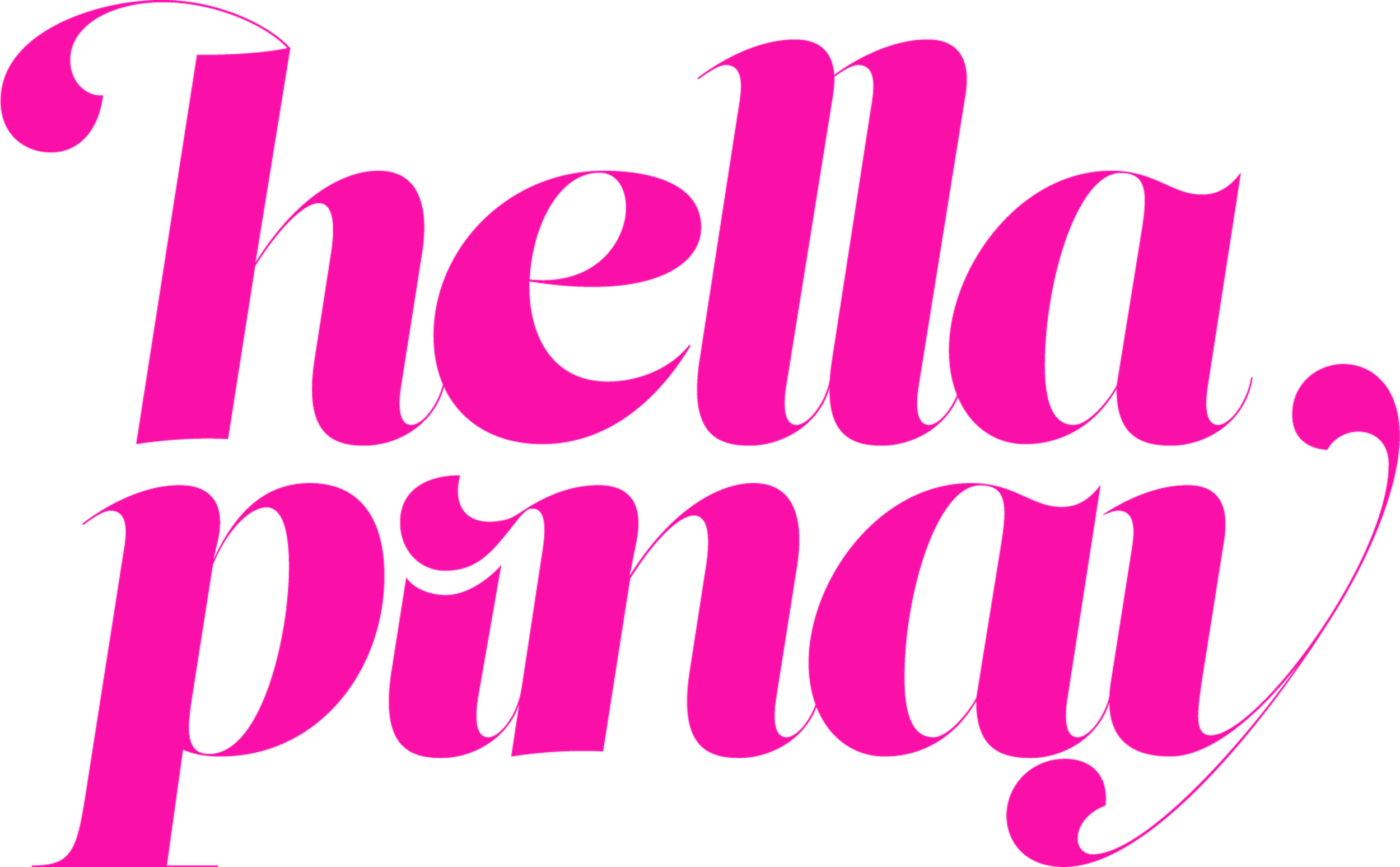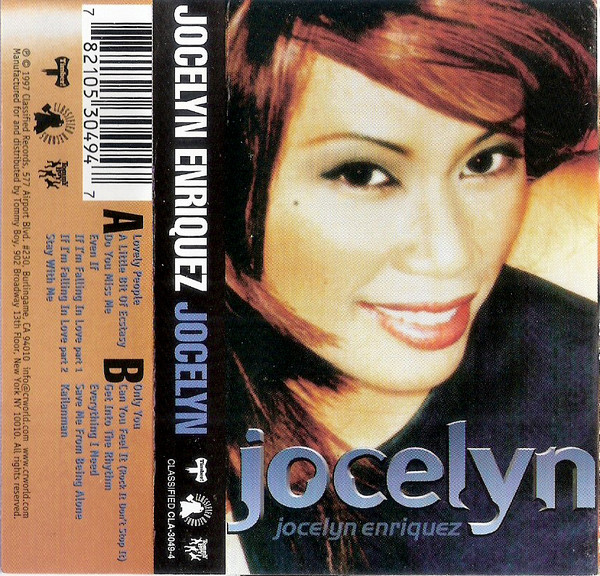Jocelyn Enriquez on Mainstream Success, Representation and Filipina Identity
It was the summer of 1996. I was laying on the carpeted floor waiting impatiently, the gust from the whir of the fan sweeping my bangs from left to right. In our household, we had no air conditioning. It was a little past 9pm and the windows were open, allowing the stickiness and humidity of the Chicago summer to slowly coat my brown sun-kissed skin. The radio was on. My cassette tape set. My boombox ready to hit record. The B96 countdown was beginning and I knew what song I was waiting for.
Mama taught me to be proud of being Filipino, and sometimes her lesson felt aggressive. “Oh, they’re Filipino” or “Ay, Filipino!” was like an expected notification from her, no matter where we were. Maybe because in the Chicago North suburbs, we felt like an anomaly. Away from the motherland. Underrepresented in America. Invisible in the mainstream. In retrospect, her teachings of pride now seemed urgent, a way to preserve who she was and what it meant to be Filipino to her daughters. The radio announced and echoed “Number 5.” My ears perked up waiting for that opening synth on “Do You Miss Me” and after an eager breath, I exploded up to press the record button. All night I waited for Jocelyn Enriquez.
As a kid, Jocelyn Enriquez was just as important to me as Mariah Carey, Brandy, and Groove Theory. Maybe it’s because Mama taught me to be proud of being Filipino. But at 10 years old, there was something about seeing someone who looked like me, went against the stereotypical CNA/nursing careers, and represented something culturally we all love: showbiz. There was no social media at the time, but it felt like Jocelyn Enriquez was everywhere. There were no meme dances yet (just line dances), people danced freely and it caught on organically. There was something about freestyle music, the feeling that surged through your body when you heard the beat and lyrics flirting with one another. It was just an added exclamation that we were dancing to a Filipina American artist. And all throughout 1996-1997 these same moments were replicated across the US. From young girls like myself to college students to clubgoers to young professionals, all were unified in identifying with Jocelyn Enriquez - all waiting to catch her on the radio, all wanting to press record, all reading her CD dust jacket front-to-back, all seeing a part of themselves through her.
When I shared this story with Jocelyn last week on the phone, she was taken aback. “It’s almost like, if you will, an out of body experience. It’s crazy to hear that artist is me. I say that trying to hold back tears, because I was just a girl out of high school that had dreams - that had goals - that had ambition to be a recording artist.”
Jocelyn Enriquez is regarded as a music pioneer for Filipino Americans for her success in the mainstream music industry. The “Queen of Freestyle” held 3 Billboard charted songs within her young reign: “I’ve Been Thinking About You,” “Do You Miss Me,” and “A Little Bit of Ecstasy.” At the end of 1996, “Do You Miss Me” would finish #8 out of #96 on the B96 Year Countdown. First represented by Classified Records, then onto the infamous Tommy Boy Records, she went on to tour and open for some of the 90s and early aughts top music artists such as The Fugees, LL Cool J, Brandy, Mase, Dru Hill, and more.
I’d always wondered if someone who was in the forefront of breaking barriers was actively trying for Filipino representation. “Let’s keep it 100,” Jocelyn responds. “People weren’t ready to have a Filipina per se on mainstream. It was hard to accept. You know what I mean?”
It’s a feeling of invisibility I’ve also struggled with on my own creative path, this challenge of where Filipino culture or Filipino artists would be accepted or fit into the American narrative at large. We’ve teetered and existed within the hyphen in Filipino-American, dancing between the two in search of. We’re constantly challenged on crossing racial boundaries in a culture that’s been colonized and historically forced to adapt and assimilate to other cultures. “Oh, why is her last name Enriquez? She’s trying to be Spanish,” Jocelyn would go on to share with me.
Eventually as she began to release hit singles and projects, her management found the lack of Filipino representation to “be a challenge to keep up. It was never a challenge in terms of a barrier to try to get to VH1 or MTV. It was a unique situation where Jocelyn was a unique artist, and it was more on our favor,” Dorothy Dantes points out as she joins our call. And Jocelyn Enriquez would remain special, seen as a goddess and untouched. Since her first charted single in 1994 to present-day 2019, there would be a lack of Pinay representation in the American music scene who not only broke through to the mainstream on the radio, charts, and TV, but who also fully embraced her heritage. For Jocelyn, it was always about the music and writing relatable, feel-good songs rather than solely focusing on or navigating her identity through her craft.
Jocelyn’s second studio album, Tommy Boy Records, 1997
Still, she met further opposition. “I have to admit, some of the opposition even came [from] within the community,” she says. Contended with skepticism, she was challenged on her racial authenticity. Her cover art would be analyzed and reinterpreted, from how her hair was styled to the post edits on the tone of her skin. But Jocelyn would never deny her angular features, darker complexion, or her Spanish surname. “It didn’t stop me from coming home and performing at a Fil Am event and celebrating,” she continues. “Whether I realize it or not, I represent the Filipino community.” But what Jocelyn encountered was the sum of the lack of Filipino presence in media, and how this characterized the Filipina American identity. A generalized approximation of what it meant to look “Filipina” formed, rather than embracing the wide spectrum of our images: light to dark skin, thin to curvacious, flat to pointed noses, almond to round eyes, straight to curly hair, etc. The 1997 Jocelyn album cover was highly favored, as the community accepted the images where she looked the most “Asian.” The trouble is when we place the weight of our racial representation on one individual, rather than acknowledging the Filipino American experience as a whole. Responsibility and representation lie not only with the person at the forefront, but also with the photographers, stylists, MUAs, hair stylists, art directors, creative directors, writers, etc. who create what the people consume every day.
Although Jocelyn and her management had to bear this type of weight, she never looked at it as a struggle, questioned her heritage, or hid her background. Instead, she saw it as an opportunity to introduce what is Filipino to the masses. Both Jocelyn and I agree in silence as her manager Dorothy expresses, “I think we were introducing this heritage per se in terms of the mainstream. Maybe they haven’t heard of this culture or this heritage as much. We never struggled with it internally. It was more like an eye opener of who we are.”
Throughout our phone conversation Jocelyn spoke with such grace, continuously affirming who she is as an artist. Fresh out of high school when she hit the radio waves, she was living in the moment and focusing on the artistry in her music, and her success reflected this. This was her brand.
““I know image is so important, but I have to say I’m not trying to be anything but myself. That’s the only way I know how to succeed.” - Jocelyn Enriquez for ATDP Berkeley”
“Back then people didn’t know,” Jocelyn acknowledges. “We didn’t have social media. We didn’t have that accessibility as we have now to the internet. I think honestly, the struggle might have been within ourselves. Maybe the lack of believing that we can actually attain this. And so that’s why, even when I performed for the Filipino community - I think because we were there, our presence was there. It was never about ‘Filipino Power’ per se, but really a celebration of ‘You know what? We are all doing this together; we are all celebrating the music.’ And I think we need to continue that, rather kind of questioning it. But what we can do is continue to put out good music for people to appreciate, and then they’ll even be introduced to our community.”
Away from the motherland. Underrepresented in America. Invisible in the mainstream. Mama taught me to be proud of being Filipino, and sometimes her lesson felt aggressive. She ingrained it in me at a young age, to simply be proud of Filipinos. She never exactly explained why, she just reiterated that we had to stick together as one. Jocelyn Enriquez never wanted to be two people. So she remained true to herself. But that mended the Filipino community as a whole. She brought all the listeners together, as one. Closer together. Represented. Visible.
See Jocelyn Enriquez perform live at UNDSCVRD’s season opener this SAT JUL 20 at 598 Stevenson St. @ 7th St. in SOMA Pilipinas, SF + pull up to the official after party with the Hella Pinay crew at 10:30PM! Sounds by: LUV (Chilltown Collective/Roadie Worldwide), DJ Style Free + Hella Pinay's very own resident Hella L.
10:30PM-1:30AM at Executive Order, 868 Mission St, SF. 21+ NO COVER, NO CREEPS. Free RSVP here
Charlie Kane
Charlie Kane (she/her) is a writer who concentrates on educating and providing context towards today’s youth and streetwear culture. Her recent work focuses on the art of lore storytelling, defining women’s streetwear, and effects of the experience economy. While the growth in her career is rooted from her writing practice, Charlie explores other mediums within art, digital curation, and event production to expand reach and give accessibility to context and experiences for marginalized communities. Currently, Charlie is the Editorial Content and Community Manager for Find Your Grind, a self-discovery platform for the 21st century.




